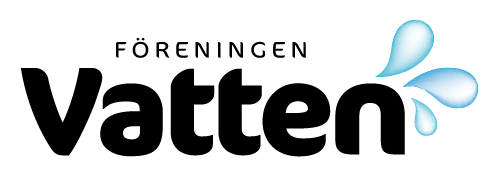NEDBRYTNING AV UREA I ET NITRIFISERENDE DYKKET BIOLOGISK FILTER I ET FISKEOPPDRETTSKAR MED KARINTERN RESIRKULERING (SYSTEM BIOFISH) / Removal of Urea in a Nitrifying, Recirculating and Submerged Biological Filter Located in a Fish Tank (The Biofish System)
In a fish tank with a build-in upstreams aerobic biological filter (The BIOFISH System), batch-experiments were made to study whether hydrolysis of urea is a limiting step in the conversion of urea to nitrate. Based on frequent grab sampling and analysis of the different forms of nitrogen in the water, calculations were made for the […]
JORDBRUKSDRIFT OCH KVÄVELÄCKAGE I SÖDRA HALLAND / Agriculture and Nitrogen Leakage in Southern Halland
The southern part of Halland in south-west Sweden constitutes an area with great risk for nitrogen leakage from agricultural land. This is due to high precipitation, sandy soils and intense animal and crop production. The nitrogen transport in the agricultural rivers Trönningeån and Smedjeån is high but has decreased significantly during the 1980s. Decreasing transport […]
BIOLOGISK KVÄVEREDUKTION FÖR KOMMUNALA OCH INDUSTRIELLA AVLOPPSVATTEN / Biological Nitrogen Reduction in Sewage and Industrial Wastewater
The demand for more efficient wastewater treatment in Sweden and Denmark has increased lately. The demand for nitrogen removal has especially increased in Sweden, where this means that nitrogen has to be removed with 50 % to begin with and 75 % for some areas later on. In Denmark the general requirement is a maximum […]
NITRIFICATION AND ITS SUPPRESSION IN THE BOD TEST
This study is concerned with nitrification in the BOD test and how to suppress it. The results show that a significant proportion of the BOD value of biologically treated municipal effluents is due to nitrification and that it can be suppressed by the addition of allylthiourea (ATU). A national survey comprising 298 samples from 35 […]
BEHANDLING AV ETT JÄRNRIKT GRUNDVATTEN MED NITRAT / The Treatment of Iron-rich Groundwater with Nitrate
Recent biogeochemical studies suggest that denitrification in groundwater is widespread, and that there is a close coupling between denitrification and the cycling of groundwater iron. The possibility to use this coupling for in situ treatment of iron-rich groundwater has been studied in a full-scale field test at Knislinge Waterworks, Ö. Göinge Community. Under a 50 […]
FILTER I AVLOPPSRENINGSVERK / Filtration in Sewage Treatment Plants
In sewage treatment plants several types of filters are used, most of which are originally constructed for water treatment. As a matter of fact, all filter constructions are equally suitable, when the water has been prepared in a correct way for a particular filter or, reversed, the right filter is chosen for a particular water. […]
TREATMENT OF WASTEWATER IN POLAR ENVIRONMENTS – STATUS AND FUTURE TRENDS IN SCANDINAVIA
This paper deals with treatment of wastewater in low temperature regions of Scandinavia. The emphasis is on treatment of wastewater from small communities and recreation areas. The basic principles of chemical and biological treatment plants are described. Case studies of different types of wastewater treatment plants are presented, including treatment results and the special prerequisities […]
VOLYMBEHOV VID KVÄVERENING / Nitrogen Reduction – Volume Demand
Because of the slow growth of the nitrification bacteria at low temperature, nitrogen reduction normally requires long hydraulic retention times during winter time. Important for the nitrification process is the aerated sludge age. Factors influencing the sludge age are aerated volume, mixed liquid suspended solids concentration, organic load and sludge yield. In an existing plant […]
BIOLOGISK BEHANDLING – KVÄVEREDUKTION Utformning av anoxzoner och dimensionering av omrörningsutrustning / Biological Treatment-Nitrogen Reduction Design of Anoxic Zones and Sizing of Mixing Equipment
Nitrogen reduction by denitrification in anoxic zones is increasingly used worldwide within activated sludge processes (Phosphorus removal in anaerobic zones have similar requirements). Mixing is a necessary base for good process results and involves several contradicting requirements. The design of the zones and the mixing equipment should, when possible, be done simultaneously to achieve good […]
PHOSPHORUS REMOVAL IN INTERMITTENT CYCLE EXTENDED AERATION ACTIVATED SLUDGE (ICEAS) SYSTEM
A large scale pilot treatment system has been used to study the effect of limiting the dissolved oxygen concentration in intermittent cycle extended aeration activated sludge (ICEAS) system on nutrient removal. The objective was to develop operating data and to establish and verify that operational conditions conductive to biological phosphorus removal can be maintained. It […]
